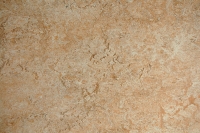Marmoleum Flooring
Thu, Feb 02, 2012Selecting the proper floor finish can be a difficult task for any project, especially educational facilities.� Almost every school you enter today has a cafeteria or multipurpose room that functions as an eating area.� The eating area is usually equipped with cafeteria tables that have attached seating.� These tables are large, can weigh several hundred pounds, and can contribute to damaging the selected flooring material.� If sheet vinyl flooring was selected, the vinyl would become dented and/or compressed at each table leg location.� Sheet vinyl does not have the have compressive strength to withstand such high point loads.� In just a short period of time, the entire floor would become visibly scared and unattractive.� Vinyl composite tiles would have the compressive strength to withstand the weight of the tables.� However, over an extended period of time, the tiles expand and contract, allowing dirt and grease to accumulate in the joints.� Virtually impossible to remove, the dirt and grease quickly become noticeable.�� Ceramic tile is another viable option, but can become a slip hazard when wet.� Also, the grout will stain with repeated exposure to liquid, dirt and food.


